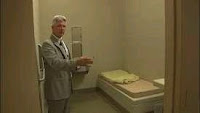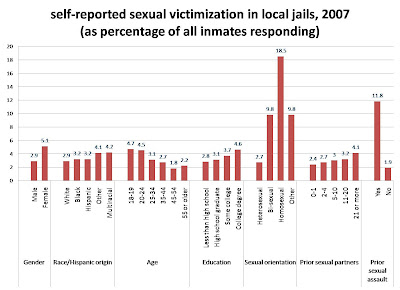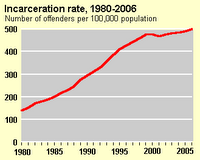California’s prison system is the most over-crowded (170,000 in a system designed for 100,000) and its inmates have the highest recidivism rate (70%) in the country. Why? A public that favors longer sentences, mistrusts corrections officials to make good public safety decisions, and increasing politicization of crime that results in politicians who advocate sentencing reform at their peril.
These constraints have, in part, been taken out of the hands of the public and political system in CA. As a result of class action suits, the prison system here is increasingly in the hands of third parties. Health care of inmates was transferred to a receiver because of widespread problems. In an historic decision, CA awaits the recommendations of a panel of federal judges regarding prison over-crowding.
How might the state respond to orders from the judicial system to change its practices and reduce overcrowding?
Reduce the number of people sent to prison. The options for sending fewer people to prison are limited. As a result of the common use of ballot propositions in CA, some sentencing policies are unavailable to legislative manipulation. Most notably, overturning the well-known Three-Strikes law would require a 2/3 vote by the state legislature – unlikely to occur when almost 70% of Californians voted for it. Policies not hampered by propositions get little traction.
Release inmates early. Governor Schwarzenegger lobbied this but the idea fell by the wayside about 24 hours before his latest budget proposal was released. Opinions differ but I suspect it also has to do with political viability – even if crime doesn’t go up overall with the release of 22,000 low-risk inmates, there is the nagging political (and public safety) problem of the one guy who does something horrible.
Build more prisons. A ($7.8 billion) reform bill that includes substantial funds to build more prisons has been passed but progress has stalled over implementation and budget difficulties.
Supervise parolees differently. The debate now is, quietly, over this remedy. Some of the increase in the prison population is due to an increased likelihood of parolees being returned to prison for technical violations. CA supervises the vast majority of released inmates – by watching them for a shorter period, they will notice less crime. By declining to send parolees back to prison, they reduce the prison population.
I’ll be watching closely – the sociologist in me says that (federal) judges will have a difficult time imposing sentencing reform on a public and political climate that does not want it. On the other hand, it is intriguing to watch a state struggle with these issues when the influence of public zeal for punitive punishment is substantially reduced and a budget crisis is forcing the state to make very real choices between more prison beds and laying off public elementary school teachers. Stay tuned.


 just about every prison has a hole, a box, or a
just about every prison has a hole, a box, or a 





